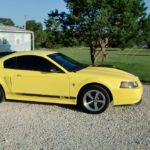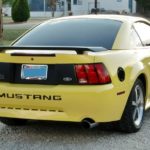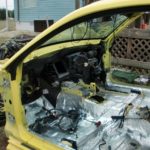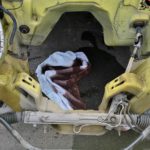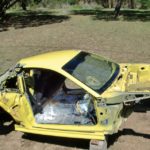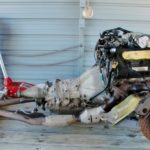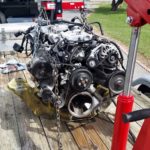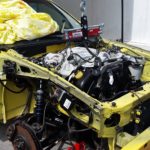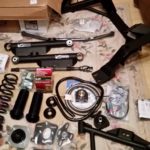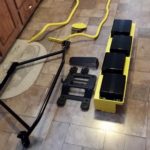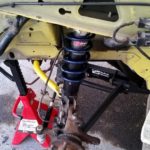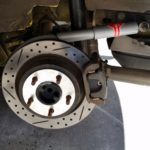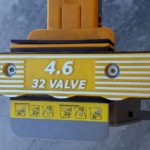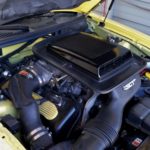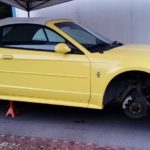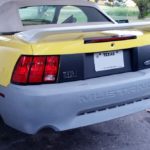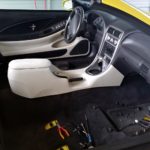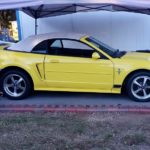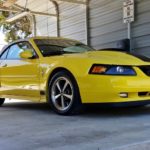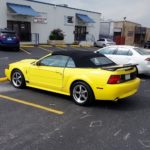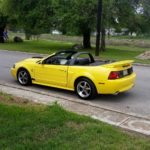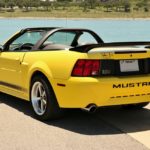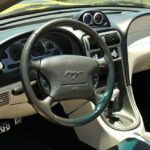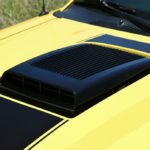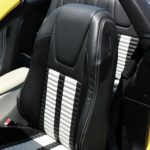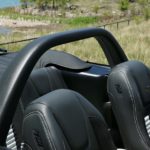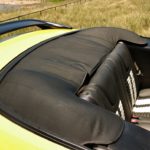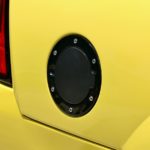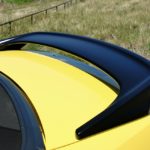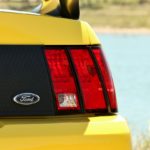Mach 1 Convertible: One-of-a-Kind Droptop Pony
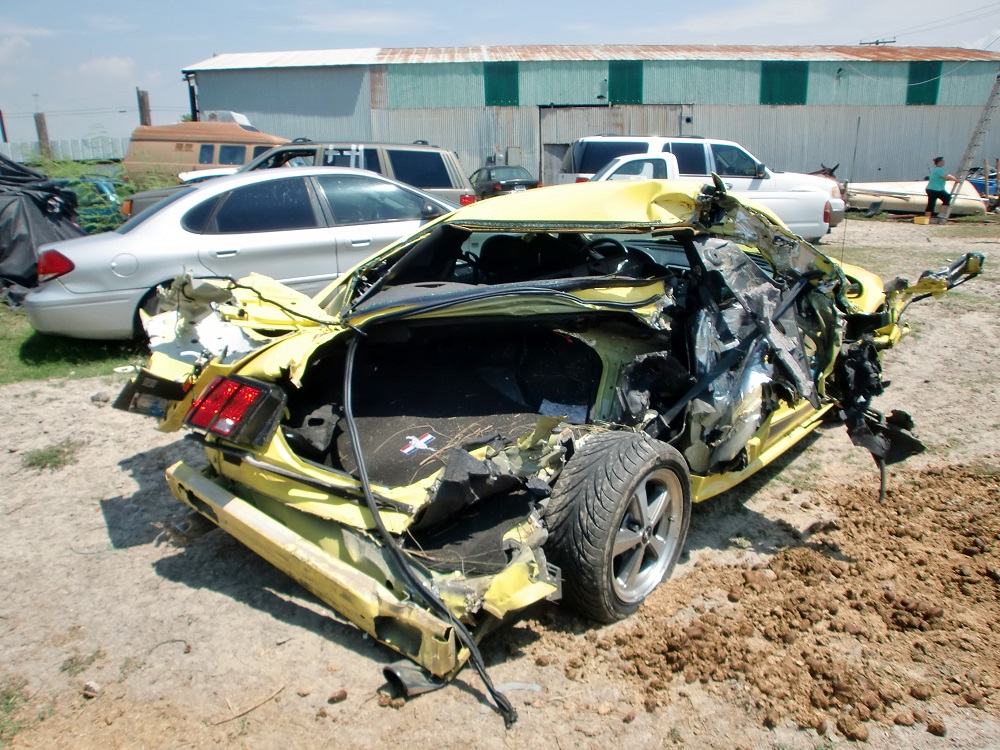
On August 24, 2013, a large truck slammed into the back of the Mach 1, turning Sanders’s dream car into a nightmarish heap of busted glass and shredded metal. What once was a right corner instantly became a ragged stump. The driver of the pickup sped off. Sanders and his wife were lucky to walk away from the wreck.

The Mach 1 looked hideous, but its engine and transmission still worked. Instead of sending the entire carcass off to the scrapyard, Sanders paid his insurance company $1,100 for it and had it trucked to his house. A couple of years later, it was Sanders’s turn to take his car apart. He removed every salvageable component he could think of. After he picked what was left of his Mach 1 clean, he let a metal recycler haul it away.

Parts filled Sanders’s house and backyard shed; visions of a Mach 1 convertible filled his mind. I asked him what his biggest concern was about creating it largely by himself. He responded, “None really. Ford already made the Cobra convertible with the 32v motor in it since 1996.” If there was a potential problem that crossed his mind it was finding a Zinc Yellow 2003 Mustang convertible. All he wanted was the body and the color he loved; he could take care of the rest.
Sanders soon found what he was looking for. It was a garage-kept, one-owner car with a white interior and matching roof. He didn’t want to keep the seats or top, but he did like the idea of some white brightening the interior of his build, so he began another search. This time it was for some of the black and white pieces that were available in 1994-1996 Mustang convertibles. His patience soon paid off.
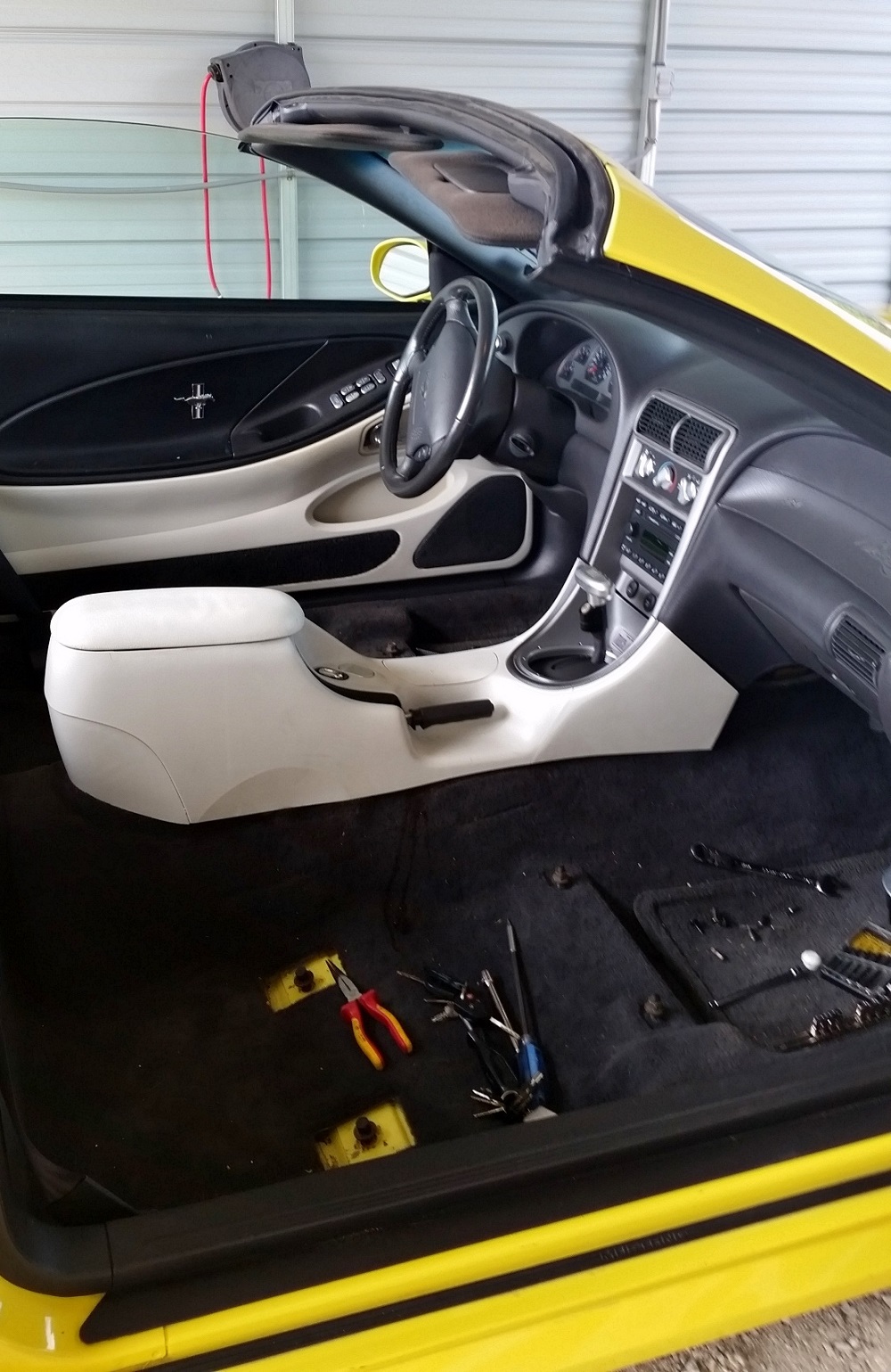
Just as he had done with his Mach 1, Sanders disassembled the V6 droptop. He began swapping interior parts (including the Mach 1000 audio system) into the car in September of 2015. A style bar soon followed. Despite his confidence and capabilities, he ran into challenges. Some of the interior components required retrofitting. The ribbed black and white covers Sanders had ordered were difficult to fit on the front seats. Instead of going through the trouble of installing a new black soft top, he had a shop do it. Sanders bought a Roush rear wing to cap off the trunk lid.
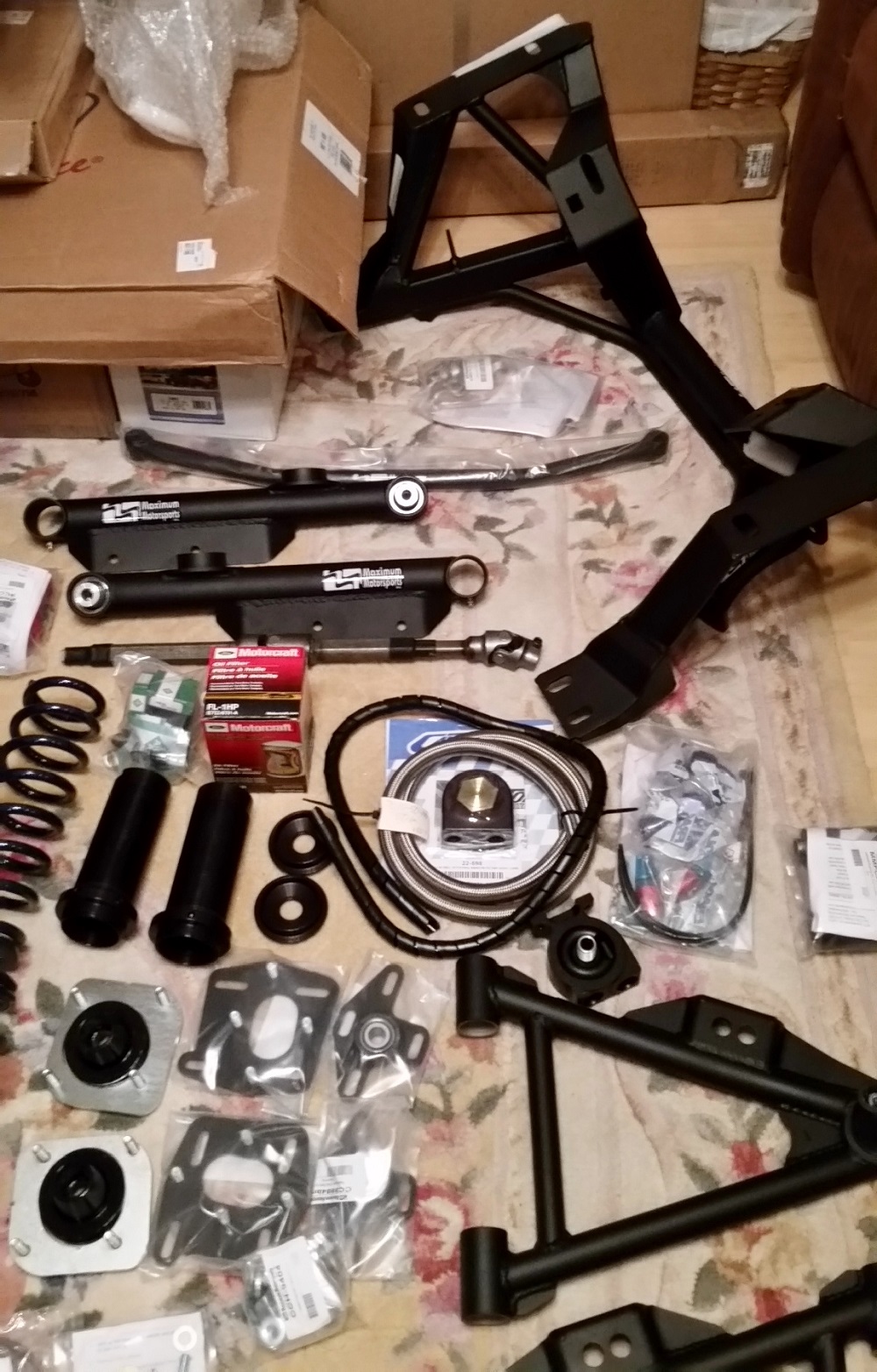
Underneath, Sanders equipped Machenstein with beefed-up upper and lower rear control arms, full-length subframe connectors, motor and transmission mounts, and a K-member kit consisting of the K-member itself, lower control arms, camber and caster plates, a coilover package, and hardware for repositioning the front sway bar. A set of staggered-width wheels and tires (17″ X 8″ and 245/45/17 rubber in the front and 17″ X 10.5″ and 335/35/17 rubber in the back) connect Machenstein to the road.
By September of 2016, Sanders was ready to put the Mach 1’s long-dormant heart into its new body. Before he lowered the 4.6 into the engine bay, he added underdrive pulleys. That entire procedure was problem-free. Sanders said his biggest challenge was “lining up the upper and lower control arms bolt holes, with the holes on the chassis while the control arms were mounted to the differential.” He enhanced that inside and out by filling it with 4.10 gears and protecting it with a finned cover that helps the diff cool. Everything was more or less in place by November.
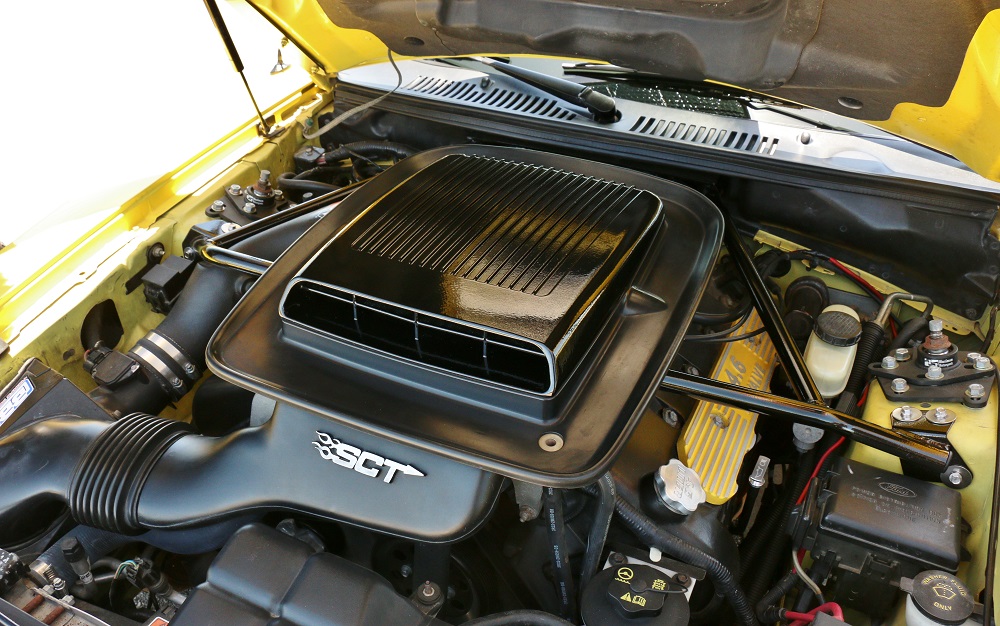
“At times it was frustrating and other times it was a big sense of accomplishment, especially the day I started up the engine for the first time and there were no error codes, just the blissful sound of a 4 cam engine running,” Sanders said.
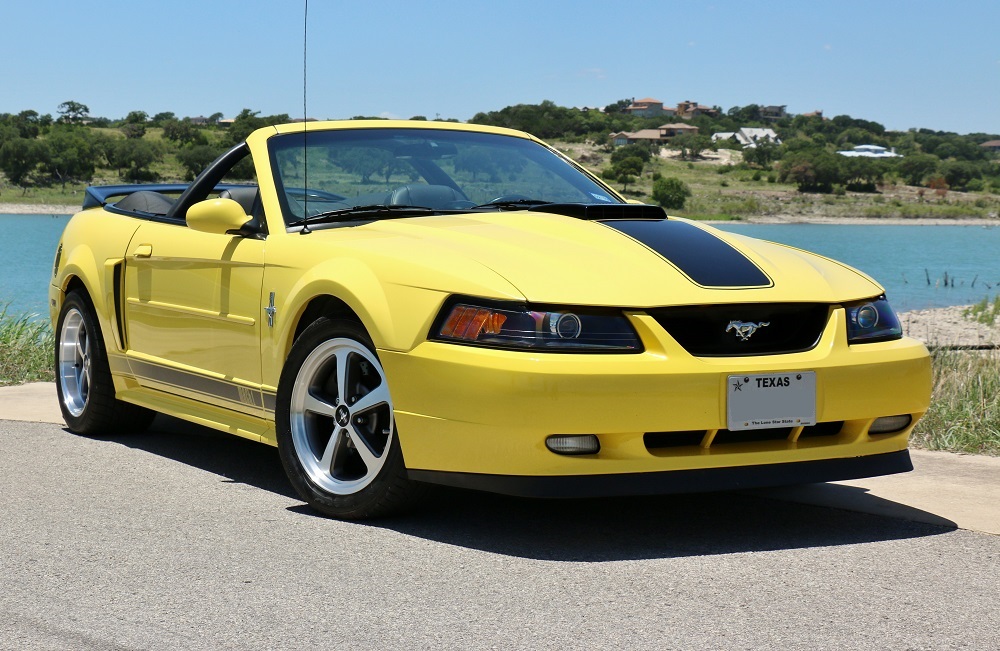
It’s only a matter of time until Sanders’s Mach 1 comes apart again. When it does, it’ll be on his terms. He’s thinking about pulling out Machenstein’s engine, upgrading its bottom end, and installing a ProCharger.
Check out this gallery to see the evolution of Machenstein.

